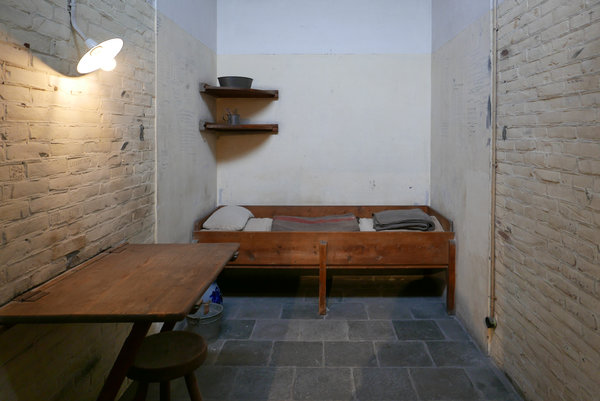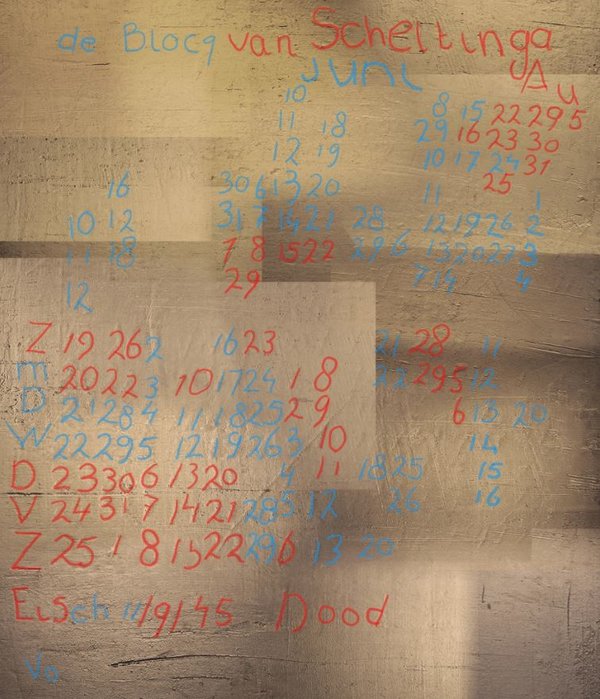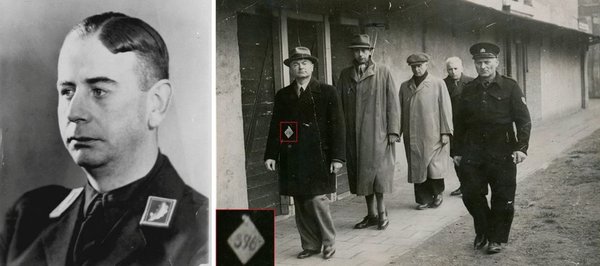TU Delft students reveal hidden inscriptions from NSB leader
In death cell 601 in the former Scheveningen prison, better known as the Oranjehotel during the war, inscriptions can be found that were made by the condemned prisoners. However, one section of the wall was plastered over after the war. Led by Professor Joris Dik, a group of TU Delft bachelor's students was able to discover the secrets of this part of the wall without damaging it. The students’ graduation thesis was published this week in academic journal Heritage Science.
During World War II, the Oranjehotel (Orange Hotel) was the nickname for the Scheveningen prison where German occupying forces imprisoned more than 25,000 people between 1940 and 1945, including many members of the resistance. More than 250 of these prisoners were sentenced to death and executed by firing squad on the Waalsdorpervlakte in the nearby dunes, which on 13 March 1941 witnessed the first mass execution of the war. Het lied der achttien dooden (The song of the eighteen dead), the resistance verse by Jan Campert, recalls the execution of 15 members of the resistance and three strikers involved with the February Strike against the Nazis. Directly following liberation, collaborators such as NSB (Dutch national socialist movement) leader Anton Mussert were imprisoned at the Oranjehotel.
Nationaal monument
The complex, which was decommissioned as a prison in 2009, was reopened as the Nationaal Monument Oranjehotel in 2019. Visitors to the remembrance centre can visit parts of the prison including cell 601, one of the death cells in the D corridor. Cell 601 has been preserved in its original state. The walls and doorposts bear inscriptions by condemned prisoners awaiting their execution on the Waalsdorpervlakte. There are texts such as ‘Chin up!’ and ‘Orange will prevail', but also a heart and arrow, alongside the initials ‘W.H’ and ‘M.B’, and ‘I'll stay true to you’. “The texts are emotional reminders of those who were imprisoned there. However, a small section of the wall was plastered over after the war, which meant that any inscriptions were no longer visible," explains Professor Joris Dik.
Test wall
The remembrance centre invited materials engineering students Joost, Nienke, Rick and Esmee to conduct research on the covered section of wall. The death cell needed to remain in its original state, which meant that solely non-destructive techniques could be used. “We therefore used a sample from the wall of the adjacent cell to build a test wall that was as close a likeness to the wall in cell 601 as possible," says Professor Dik. To do so, the researchers first determined which layers of paint and plaster were added to the wall in cell 601 after the war. Back at the university, they then built a test wall, layer by layer, to test their techniques. The researchers subsequently returned to the Oranjehotel to repeat the process on the plastered section of wall.
The students used a range of techniques. Raking light photography, when light hits the object from the side, can be used to reveal irregularities in the surface; using infrared thermography, the deeper layers can also be examined. The students then used image processing technology to combine and optimise the results from both tests. Doctoral candidate Ruben Wiersma, who is conducting research into the application of machine learning for art research, explains: “Infrared thermography generates a large series of images, which contain more information than we can see in a single image. Using image processing technology, we attempt to condense all of the information into a single image, and in doing so, reveal the inscriptions."
Mussert's right hand
The result is impressive: The wall revealed a name, a series of dates and words such as ‘Eisch’ (Demand) and ‘Dood’ (Death). “Based on this information, we have been able to determine that Daniel de Blocq van Scheltinga was imprisoned in cell 601. He was one of Mussert's right-hand men," explains Dik. “He was sentenced to death on 11 September 1945, but he came away unscathed." De Blocq was ultimately sentenced to 20 years’ imprisonment; he was released in 1953 after his sentence was commuted, and died in 1962 in Germany.
Anke van der Laan, Director of Nationaal Monument Oranjehotel, is pleased with the research conducted by the students: “This is an important discovery in the history of the Oranjehotel, particularly for the period directly after liberation. For the first time ever, we can read inscriptions by a Nazi collaborator, which can also be traced back to one specific person. That is an extraordinary result of this research.”
Further research
The Oranjehotel still has many secrets to reveal. Cell 601 is just one of the 120 remaining cells in the prison, which originally had 500 cells. However, these cells remained in use until 2009, and have been repainted numerous times since the war. This means that raking light photography cannot be used here, but advanced thermography can undoubtedly be used to look under the surface. “There is a lot more waiting to be discovered," concludes Rik.
More information
Publication details, Revealing unique inscriptions of a Nazi collaborator in Doodencel 601 of the Oranjehotel, Joost Wempe, Rick van den Brink, Esmee Mooldijk, Nienke Feirabend, Ruben Wiersma, Jilt Sietsma, Joris Dik, DOI: 10.21203/rs.3.rs-22940/v1
Contact
Professor Joris Dik, j.dik@tudelft.nl, 015 2789571
Press officer TU Delft: Dimmy van Ruiten, d.m.vanruiten@tudelft.nl, 0639844164
Communication Nationaal Monument Oranjehotel: Hans Gramberg, communicatie@oranjehotel.org, 06 127 65 373




